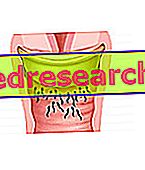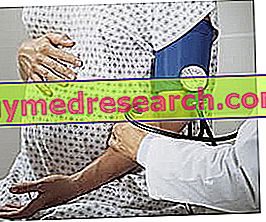Generality The mini-pill is an oral contraceptive based on a progestin hormone . This drug works by thickening the mucus of the uterine cervix and altering the lining of the uterus (endometrium). As a result, the spermatozoa struggle to ascend along the female genital apparatus and the implantation of the possibly fertilized egg is disadvantaged
Category woman's health
Advantages of the diaphragm The diaphragm is a barrier (mechanical) method of contraception, thus preventing sperm from reaching the uterus: it does not cause any side effects typical of hormonal-release contraceptive methods, such as nausea, headache, breast enlargement, weight gain, etc. Furthermore, the diaphragm can be used by the woman as she likes, without respecting some "deadlines" (typical of the contraceptive pill, for example) and is only used at the time of the report (although it is advisable to enter it a few moments before and leave it inside too) 6 hours after the repo
What is the contraceptive diaphragm? The condom is not the only barrier method of contraception: in fact, in this category the contraceptive diaphragm also stands out, a small soft rubber dome mounted on a metal ring that is quite malleable and foldable, which the woman inserts near the neck of the uterus (transvaginal) a few moments before sexual intercourse
Dyspareunia: generalities The term "dispareunia" derives from the Greek words δυσ (difficulty) παρά (near) εÙνή (bed): it indicates a painful condition felt by the woman during sexual intercourse, near the area that affects the vagina; although mostly considered a female disorder, dyspareunia can also affect men, involving the genitals. However,
A common complaint Breast pain is an extremely common discomfort: it is estimated that 7 women out of 10 have experienced, at least on one occasion, this type of disorder. Most often, breast pain coincides with the premenstrual period; in these cases, the mastodinìa (medical term used to indicate breast pain) is accentuated as the time of menstruation approaches, to progressively regress in the following days.
mastodynia The expression "pain in the breast" is commonly used to indicate a generic tenderness to the breasts. Typical of women, breast pain is an extremely subjective symptom, ranging from a simple breast tension to a sharp, intense and penetrating pain. Scientifically defined mastodinìa, breast pain worries (often to an excessive extent) women: it is not in fact a case that more than half of breast visits are booked precisely because of a generic breast pain.
Non-cyclic mastodynia One speaks of non-cyclic mastodynia when breast pain manifests itself independently of the menstrual cycle. In such circumstances, breast pain follows an imprecise and often unpredictable pattern: non-cyclic mastodynia can in fact appear suddenly without a specific motivation, disappearing equally unexpectedly or persisting for long periods without ever regressing
Key concepts Eclampsia is the most feared complication of gestosis: it is a potentially deadly syndrome, characterized by convulsions often associated with mental confusion, coma and visual deficits. Eclampsia: causes The cause of eclampsia is not known. Possible risk factors include: alteration of the endocrine system, increase in free fatty acids, vascular endothelial damage, deficiency of coagulation capacity, incorrect diet, infections, nulliparity
Complication of gestosis Eclampsia is the most terrible acute complication of gestosis (or pre-eclampsia): we are talking about a complex exclusive pregnancy syndrome, characterized by the appearance of convulsions, mental confusion, headache, vision changes and coma. Eclampsia is a potentially deadly disease, which unfortunately still has many victims: pregnant women with hypertension, edema and proteinuria (trilogy of symptoms that marks preeclampsia) must be constantly monitored, because they are more exposed to the risk of eclampsia
Introduction The term eclampsia defines a serious and acute complication of gestosis: exclusive of pregnancy, eclampsia is a syndrome characterized by hypertension, edema and proteinuria associated with convulsions and coma. In previous articles we have researched the possible predisposing factors for eclampsia, and clarified which symptoms characterize this serious disease, specifying the possible complications
Intramural fibroma Among the uterine myomas there is the intramural fibroma, a benign tumor that develops around the uterine wall, causing a change in the structure and volume of the uterus. More precisely, while subserosal fibroma affects the outer uterine wall, the intramural myoma grows in the thickness of the wall itself; it is therefore defined as "intramural" precisely because its location is intraparietal











